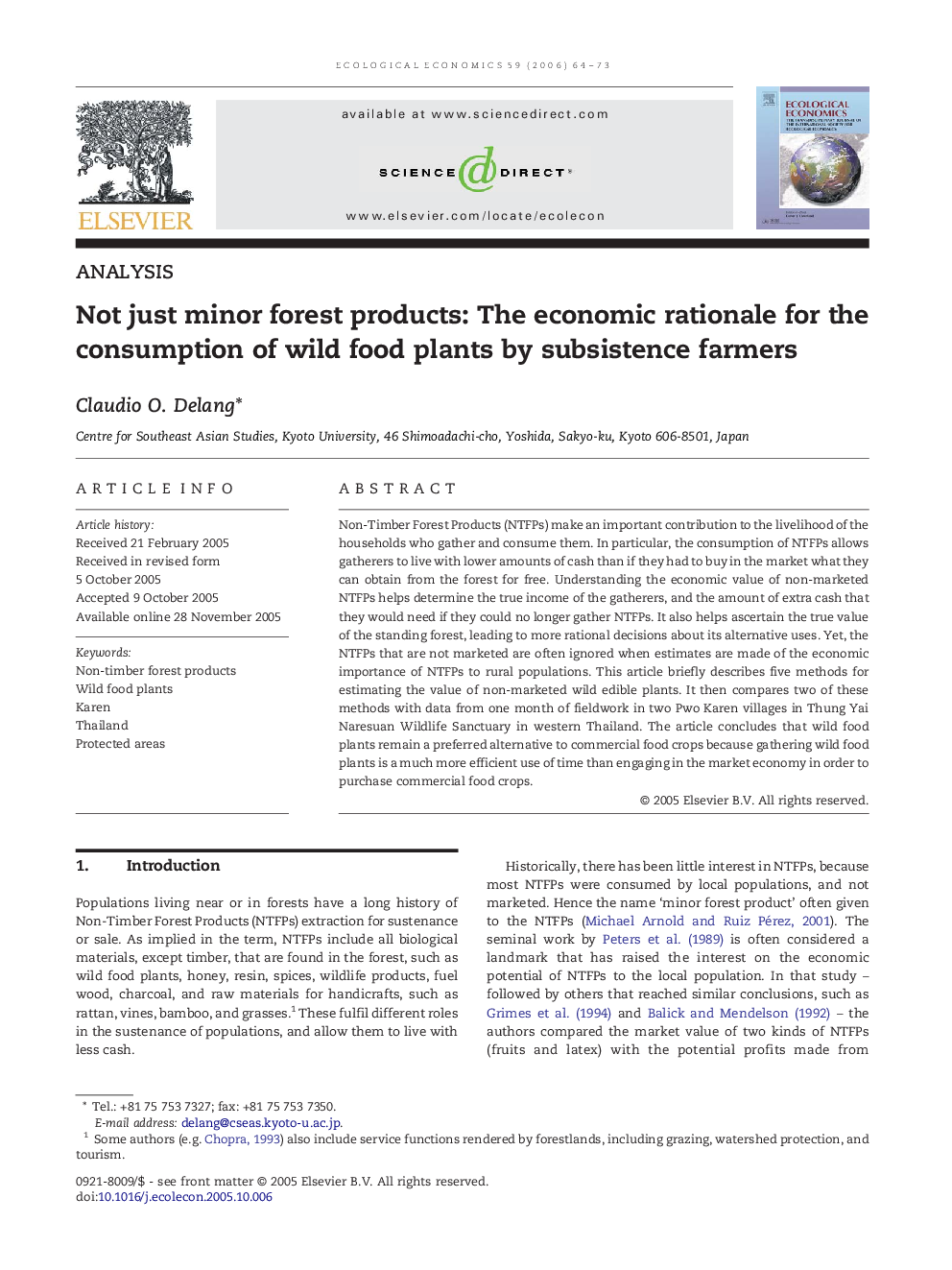| Article ID | Journal | Published Year | Pages | File Type |
|---|---|---|---|---|
| 5052436 | Ecological Economics | 2006 | 10 Pages |
Abstract
Non-Timber Forest Products (NTFPs) make an important contribution to the livelihood of the households who gather and consume them. In particular, the consumption of NTFPs allows gatherers to live with lower amounts of cash than if they had to buy in the market what they can obtain from the forest for free. Understanding the economic value of non-marketed NTFPs helps determine the true income of the gatherers, and the amount of extra cash that they would need if they could no longer gather NTFPs. It also helps ascertain the true value of the standing forest, leading to more rational decisions about its alternative uses. Yet, the NTFPs that are not marketed are often ignored when estimates are made of the economic importance of NTFPs to rural populations. This article briefly describes five methods for estimating the value of non-marketed wild edible plants. It then compares two of these methods with data from one month of fieldwork in two Pwo Karen villages in Thung Yai Naresuan Wildlife Sanctuary in western Thailand. The article concludes that wild food plants remain a preferred alternative to commercial food crops because gathering wild food plants is a much more efficient use of time than engaging in the market economy in order to purchase commercial food crops.
Related Topics
Life Sciences
Agricultural and Biological Sciences
Ecology, Evolution, Behavior and Systematics
Authors
Claudio O. Delang,
